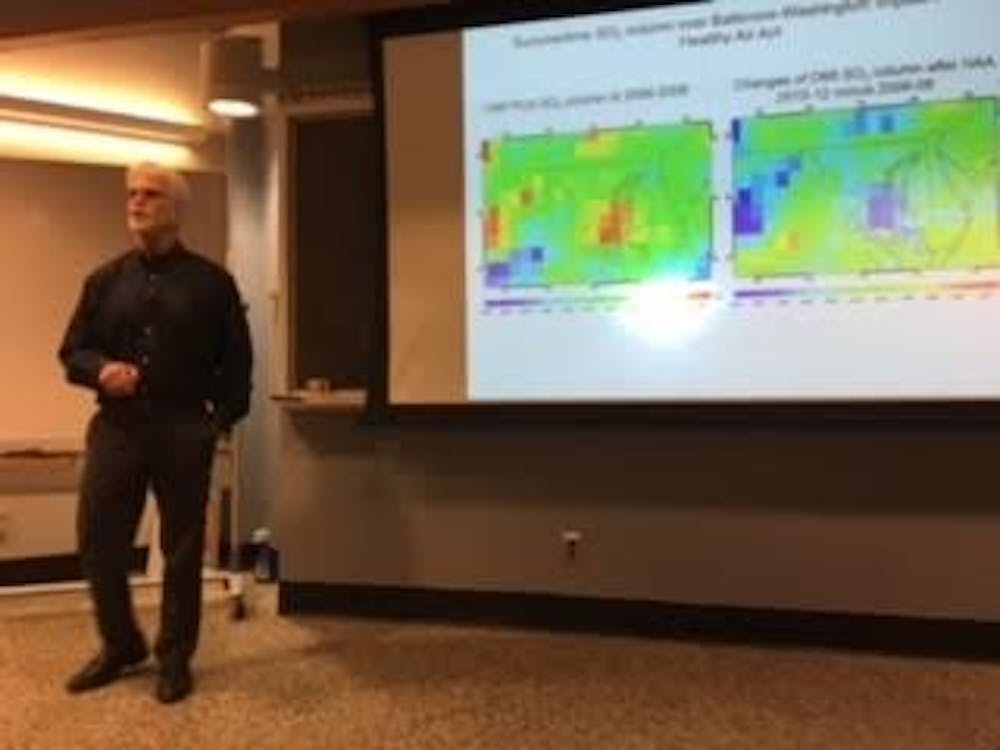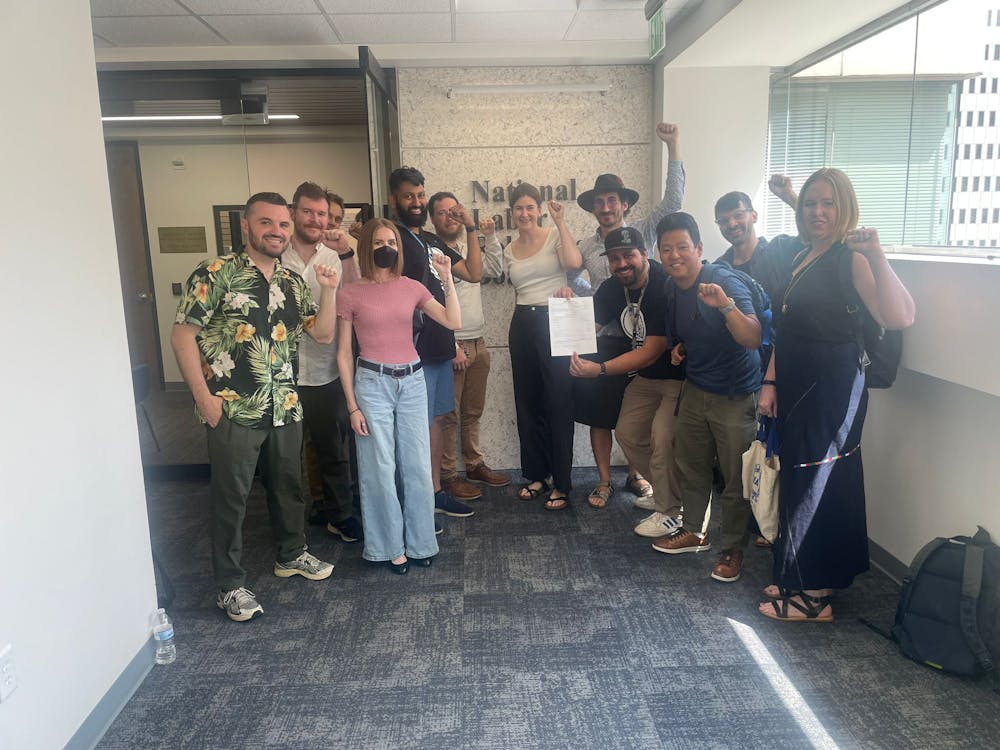Russell Dickerson gave a talk on air quality in the Mid-Atlantic region last Thursday, March 9. His lecture was part of a spring seminar series hosted by the Earth and Planetary Sciences department.
Dickerson is a professor of Atmospheric and Oceanic Science at the University of Maryland College Park. His research focuses on atmospheric chemistry and air pollution, specifically in the areas surrounding Baltimore and Washington D.C.
“We’re a state university, and we take the state’s money, so we thought we should do something to provide services to the state, which has been in violation of EPA’s ambient air quality standards,” Dickerson said.
His research shows that while there have been some improvements to air quality in recent years, there are still some pollutants that remain at steady levels in the atmosphere.
Levels of sulfur dioxide have improved since 2010. However, carbon dioxide levels have remained steady as the general population continues to use fossil fuels and natural gas at the same rate.
Dickerson explained that some pollutants also stay in the atmosphere longer than others, which affects our ability to control their levels.
“While Maryland is really good at being able to control short lived pollutants like S02 (sulfur dioxide), our success for particulate matter has been modest,” he said. “Why is that? Well the lifetime of some particles in the atmosphere is until the next rain storm, so it’s on the order of a week.”
He also noted that local pollutants do not exist in isolation and that when considering air pollution, research must consider the region as a whole.
For example, wind and water patterns factor into air quality. Dickerson explained how pollutants that are created outside of the state could travel downwind and affect the air quality in Maryland.
Additionally, Dickerson’s research showed that there is a greater amount of ozone production over the Chesapeake Bay, but the cause of this is unclear.
“If you are trying to control ozone in New York or Beijing, or New Delhi, do you care about emissions in the city or in the entire area surrounding the city?” Dickerson said. “The current model says it’s in the city, but in reality, we do need to look at a larger area than that.”
Policies have been put in place to try to improve air quality in Maryland and all over the United States. In 2010, Maryland passed the Healthy Air Act, which aims to place the state in agreement with the National Ambient Air Quality Standards.
Dickerson explained how the Healthy Air Act address two major problems including particulate matter, or solid matter that enters the atmosphere in water vapor, and ozone levels.
There is also the goal of reducing smog and improving visibility, particularly in the Baltimore area.
“There are haze rules that talk about visibility, and there’s a requirement that you have... to return North America to the visible range that it had in the pre-industrial Era,” Dickerson said. “Sounds like a pretty high bar to get over, but we have to make it by 2048. I hope I’m around to see it.”
Dickerson concluded his lecture by saying that while our understanding of air pollution and atmospheric science has improved, we need to keep refining our understanding. He also emphasized the need for policy that is well informed by science.
“There’s still a lot of science we need to learn about smog formation.” Dickerson said. “That’s still Baltimore’s number one problem.”
Senior Treva Obbard appreciated how the talk focused on local environmental issues.
“I thought it was interesting, particularly the little mysteries they discover and try to solve, like extra ozone over the Chesapeake,” Obbard wrote in an email to The News-Letter.





